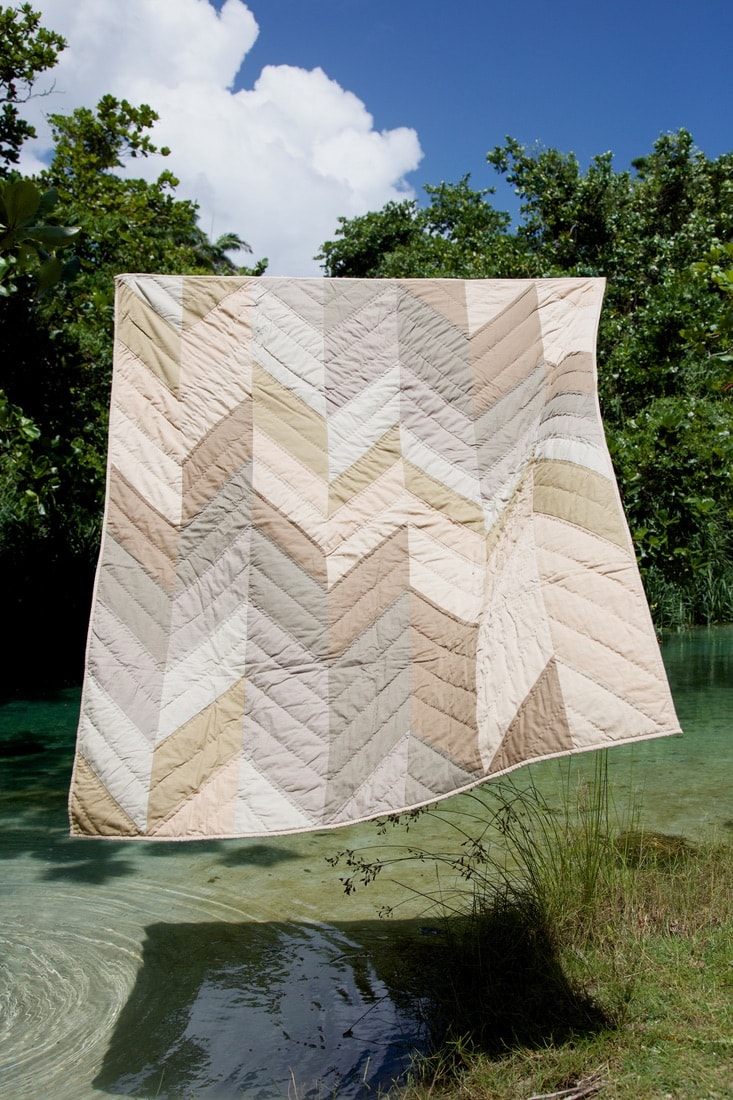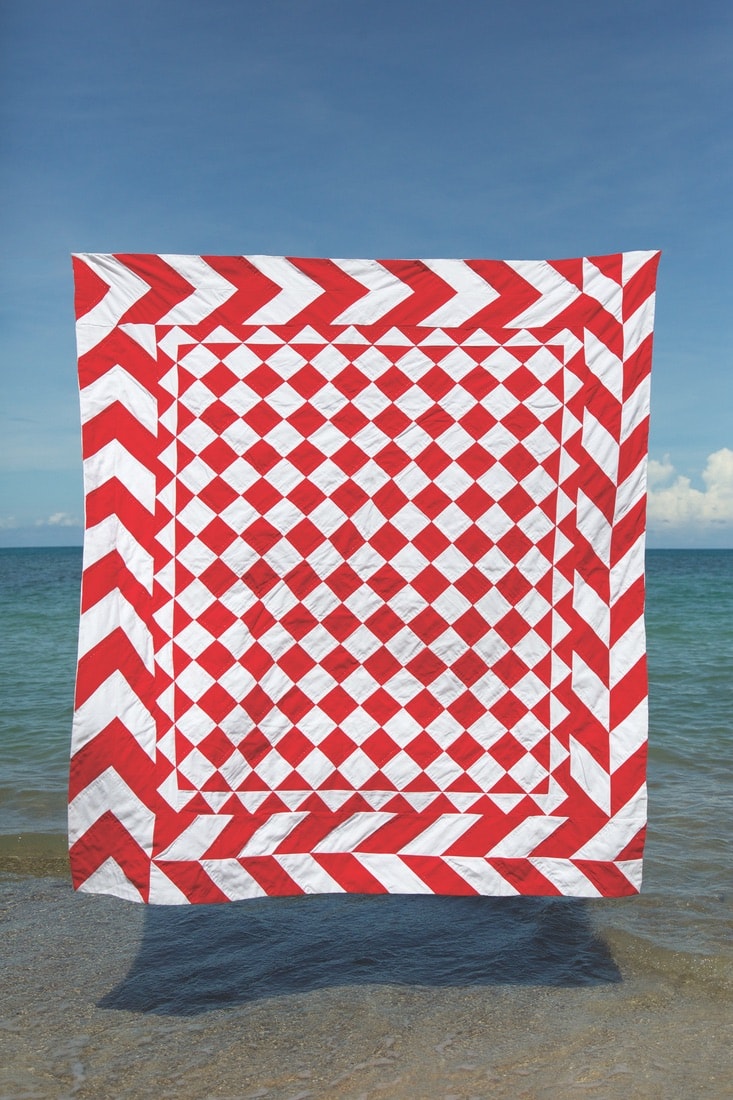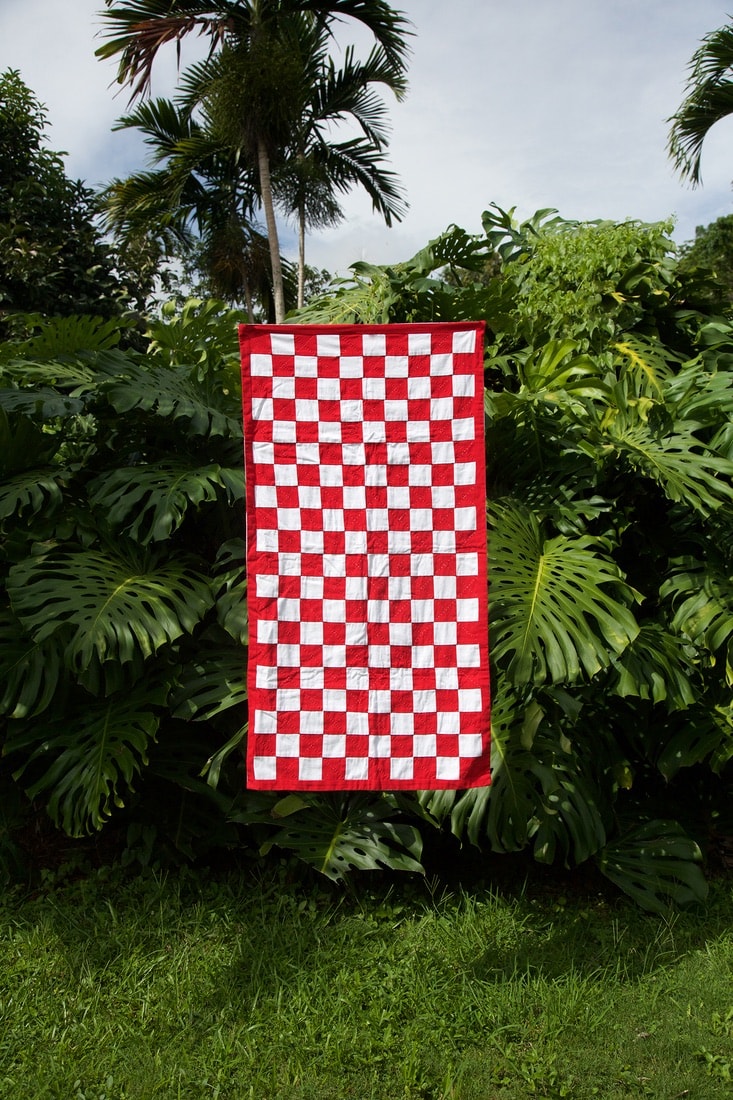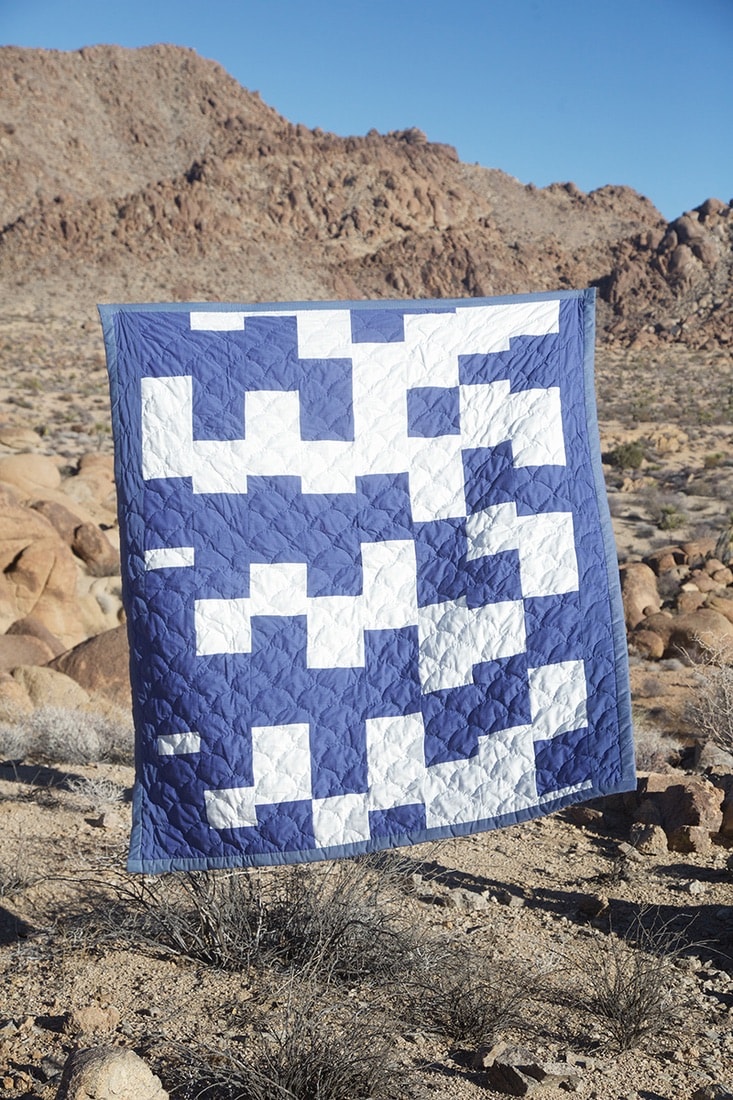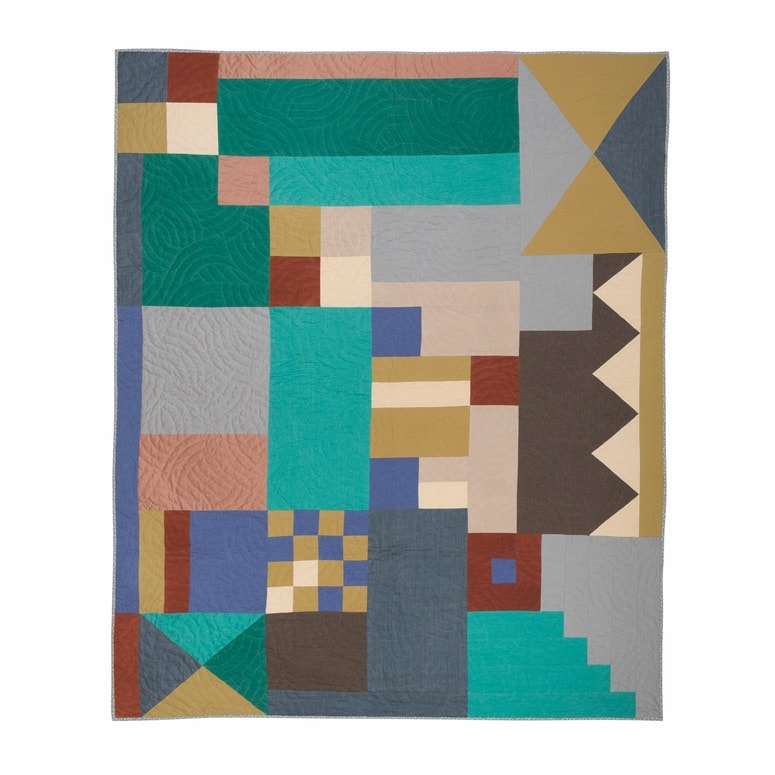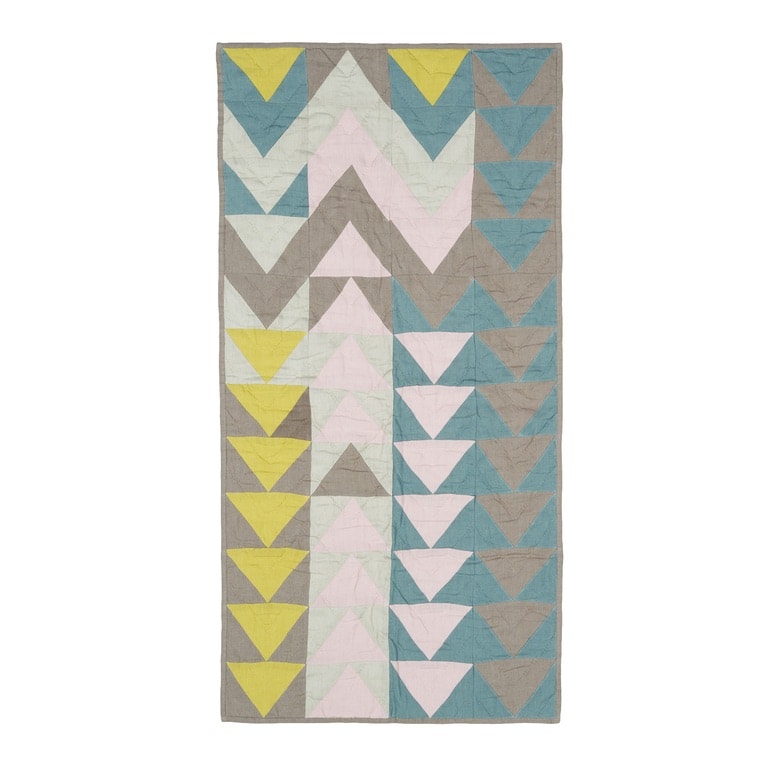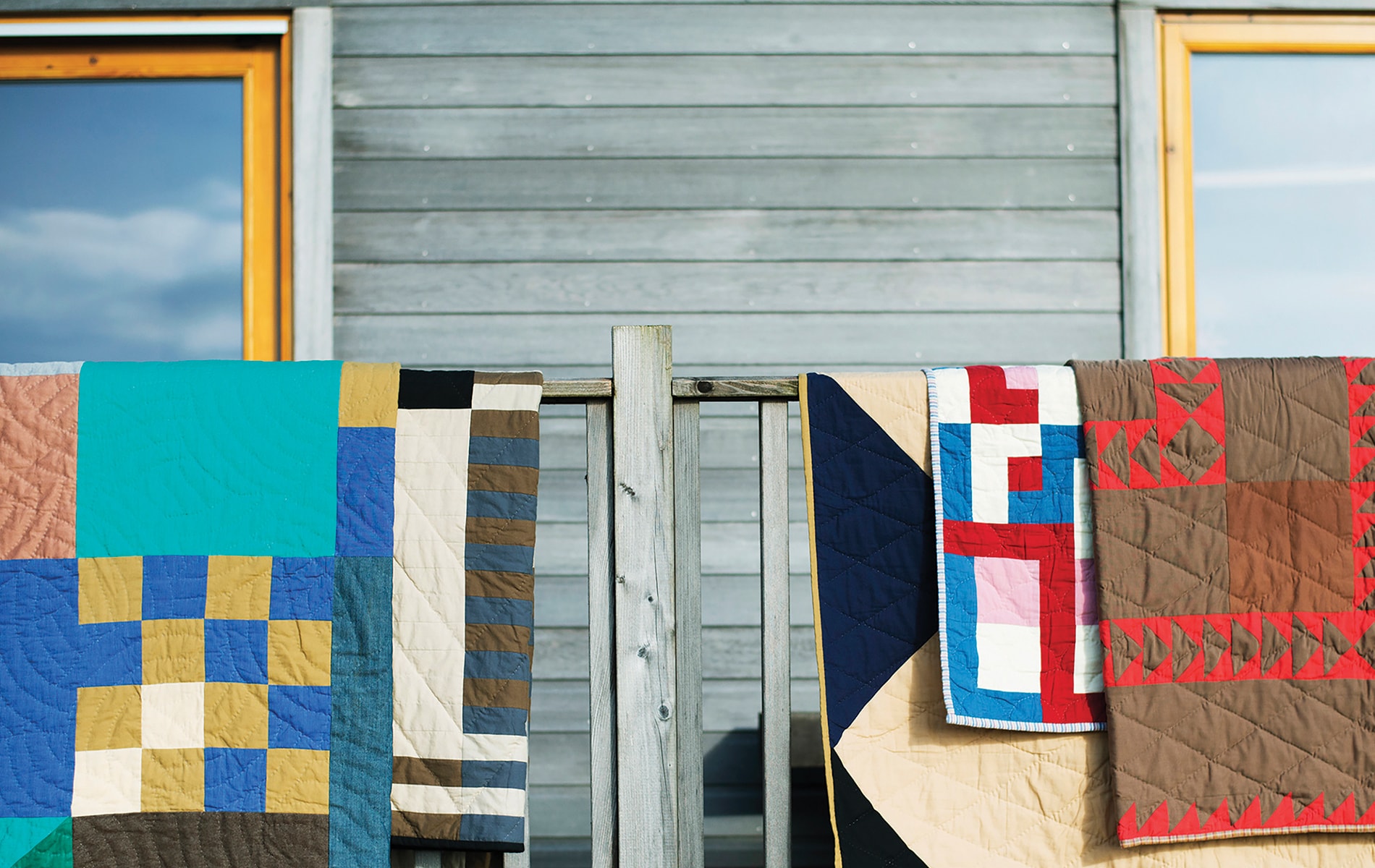
vie-magazine-jessica-ogden-hero-min
Jessica Ogden
From the Streets of Paris to the Streets of Ochi
By Audrey Johnson | Photography courtesy of Jessica Ogden
“Tools are the key to making,” says Jessica Ogden. For a creator who is as multifaceted as she is prolific, the lines between art and life are often blurred.
Jessica’s design work with Jean Touitou’s cult French label, A.P.C., began much in the same way as her fashion career. In 1994, she joined Oxfam’s NoLoGo project, repurposing garments that were quite literally thrown into the basement where she was working. Come full circle to present day, and Jessica is using end rolls of archived A.P.C. fabrics to tell the history of the brand through limited-production quilts.
London Fashion Week set the stage for Jessica Ogden collections from 1996 to 2006. “It was a time in London fashion where it didn’t have the status it has now,” Ogden says. “We were a little bit of a lost city for fashion.”
After Ogden shut down her London studio, it was Touitou who convinced her to move to Paris. The friends have collaborated on projects for fifteen years now and are currently working on the newest round of A.P.C. quilts.
“It isn’t just about, ‘I’ve done a fashion label, and that’s all I do,’” Ogden says. “I’ve expanded into textiles, and then there’s the watercolor side and the interiors side. After spending so many years doing my fashion label, it’s nice not just to be doing that one thing.”
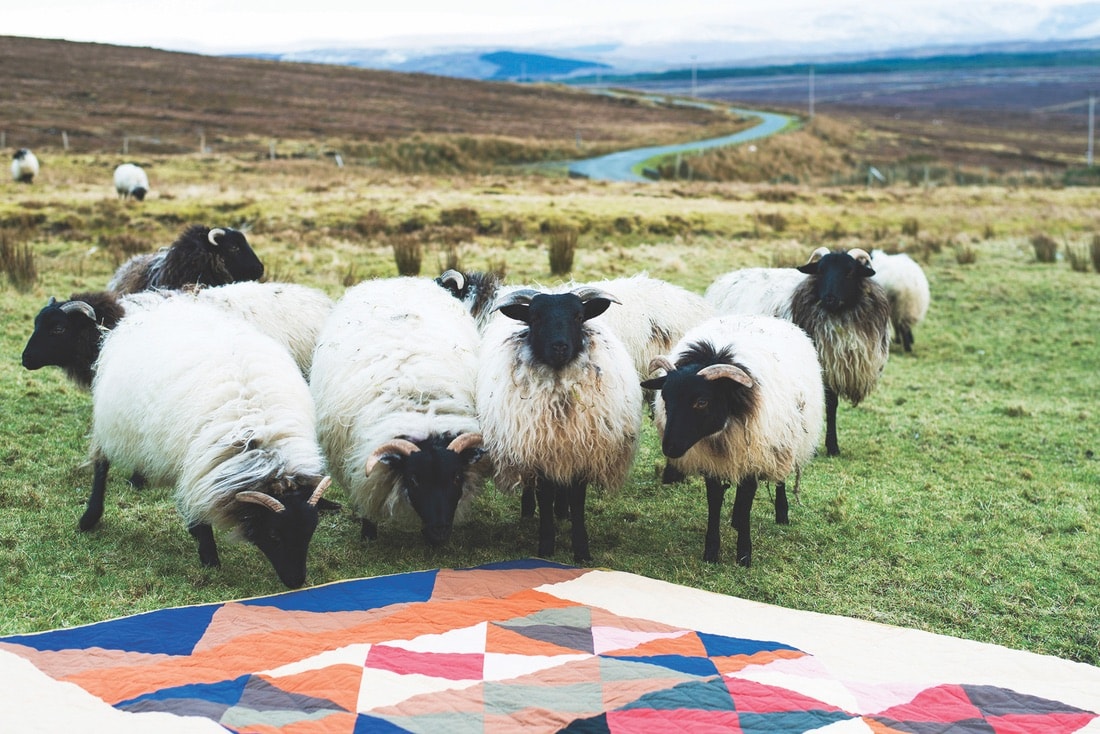
Ogden made a life in Paris for just under ten years before returning to her family’s home in Jamaica, where she was raised by British parents atop a thirty-foot cliff overlooking the Caribbean Sea. She now curates her beloved late mother’s art gallery, Harmony Hall, while making a home for travelers at her guest cottages and continuing work on her fashion projects.
I caught up with Jessica after visiting her guest cottages and got her take on inspiration, travel, and making a home wherever you are:
Audrey Johnson: When did you know that you were a creative person?
Jessica Odgen: Learning to sew from Mom and having this memory of making my first skirt in the big hall. I’d always watched her sew. But that first, “Oh my goodness, I’ve made a skirt, and I can wear it”—that was incredible. Especially growing up in Jamaica, there weren’t shops. There were in Kingston, but Mom was not a big shopper. She made our clothes when we were young. She made her clothes. I thought “Wow, it’s possible to make clothes.” At eleven, you want clothes.
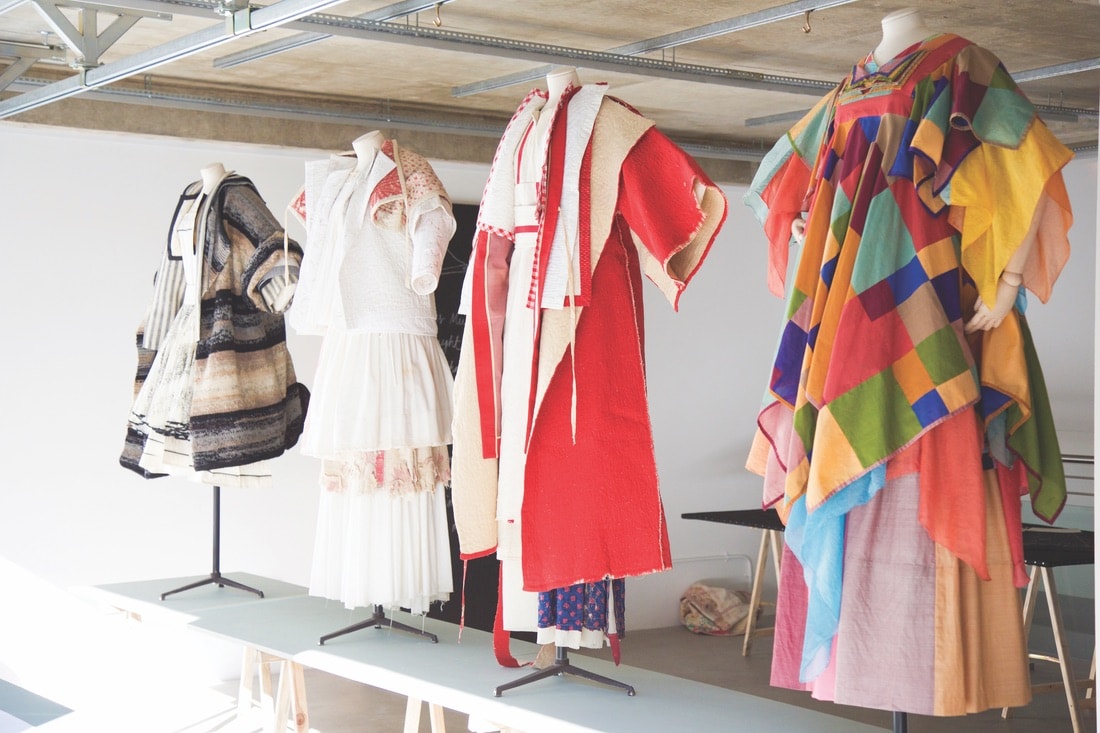
AJ: What was life like in Paris versus the pace of life now, being back home in Jamaica?
JO: I giggle about going from the streets of Paris to the streets of Ochi (Ocho Rios). It’s a difference in pace—that’s part of the reason for coming back. Yes, there were losses, but then I wanted to spend more time here because I enjoy the space. Also, there’s the nature—having the sea right in front.
I wouldn’t have moved back just to move to Kingston. It was to have the space to continue my work. I guess there’s a bit more solitude, which is good and bad. When friends visit, knowing that this has been home since I was eleven and it’s a family home, they’re like, “Oh, you grew up here?” And I’m like, “Yes.” These were our surroundings, and we are blessed to have experienced this culture. It wasn’t just to make a sunny Jamaica vacation home. It was to share the culture of Jamaica and still is. Those are the types of projects that I want to be involved in—it’s not just about being in the tourist industry, which is important, but also about creating on-the-ground cultural projects.
AJ: I follow you on Instagram, and I’ve started following a couple of artists from your page and those that I saw at Harmony Hall. From what I can see, there are a lot of talented people doing very creative things.
JO: Yeah! It’s interesting. There’s a big theater and dance scene in Kingston. I’m not even involved in that. I know it’s there and maybe one day I’ll be able to jump in in some way. It’s all going on, from the guy on the street making his pottery to people building houses. Skills that are handed down—like all the wicker weavers, who I’m fascinated by. I met this one lady who came in the ’70s. She taught at the art college. I think she’s Austrian. She said when she got here, she went mad. It was all the fibers—she works in textiles—all the fibers that are available and people were using. It was like, “Wow. This is real.” There’s a huge pool of talent.
AJ: You seem to think about things critically, from interiors and quilt making to even your parents’ art collection. How do you manage to stay so present?
JO: I do love working. The process of creating things, whether it’s re-creating things that I didn’t necessarily start—like with Mom and Peter’s collection—or the process of putting things together, there’s nothing that gives me more satisfaction than a really intense project. The thing I always find is that you can’t know the result unless you take it step by step. It’s not about seeing exactly how it will be at the end. It’s about step one: clear the board; step two: make sure your tools are correct, and so on. In that process, the thought comes. Once you’re working, work leads to work and thought leads to thought. I don’t think I can ever believe that creating is about the final package. It’s a process.
AJ: How did you and Jean Touitou meet?
JO: I went to Paris with a collection and shared a showroom with a couple of London designers, and he was brought in by a stylist, Christopher Niquet, and he liked what he saw. He commissioned one of my skirts from that collection to be in the A.P.C. collection. It was a skirt printed with stencils, and the shape was a pleated wraparound. It was that project, and then we did a project with him sending over like fifty garments a month for us to customize. That was mad. We would get the box, and there’d be anything from knickers to jeans or whatever. We’d go a bit crazy on them. It was an intense project. We ended up going to Japan to do the same thing over there, which was superexciting. There have been several projects over the years. We just became closer, more like family. I spend time in their family home now and actually am the godmother of their daughter. It was a fateful meeting that was amazing.
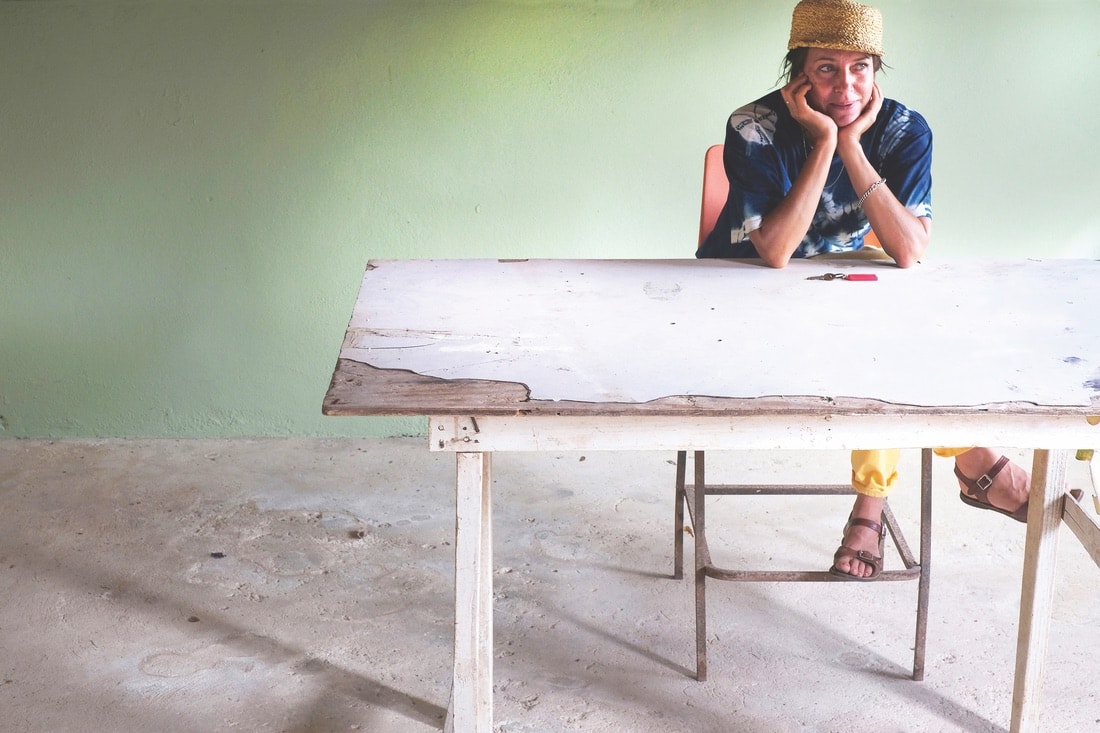
AJ: It’s funny how you start out and where you’re led before it’s all said and done. I don’t really believe in accidents. I think people and things are put in your life for a reason. It’s funny to look back and see, “Wow, that happened.” Do you agree?
JO: You wonder what your life would be without that. I wouldn’t have moved to Paris without that. It is a key in my life. I can’t speak Jean’s mind at all, but I know he would say it’s not just the work that drove our connection. That’s the other part. The projects are real, and they go places. For some unknown reason to me, Jean has a way of setting projects that work. They bring out the best in me. For instance, last year I did a T-shirt line with A.P.C. that was based on Jamaica. And the quilts are a huge project. I love doing it, and it works perfectly for A.P.C., having all of these excess fabrics from the last twenty-five to thirty years. What a great way to use them. It’s a win-win situation.
— V —
Learn more at JessicaOgden.com.
Audrey Johnson is a freelance journalist, copywriter, and editor based in Destin, Florida. She enjoys writing about food, travel, art, and people. See her work at AudreyLJohnson.com.
Share This Story!
KEEP UP WITH THE LATEST STORIES FROM VIE



